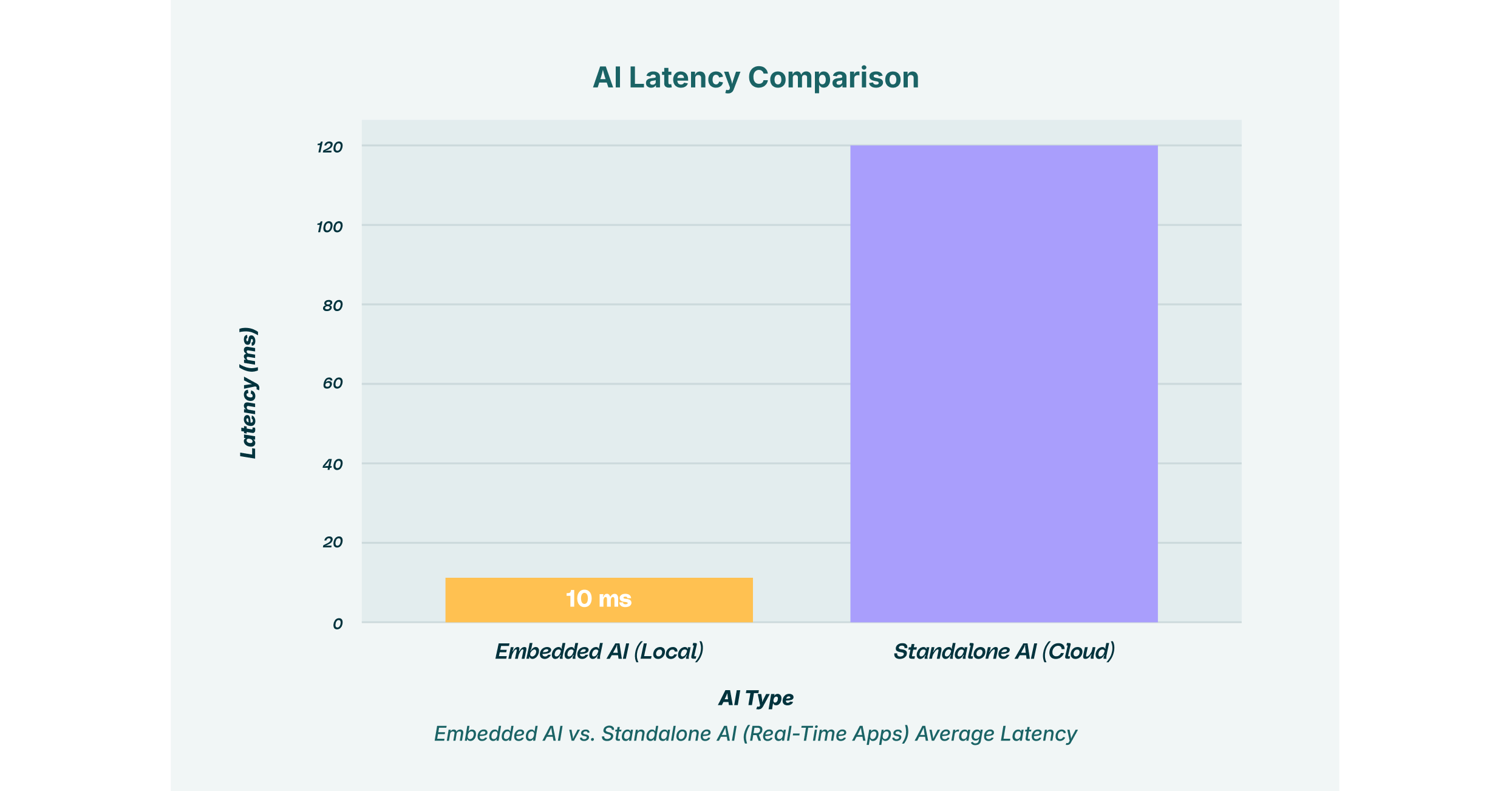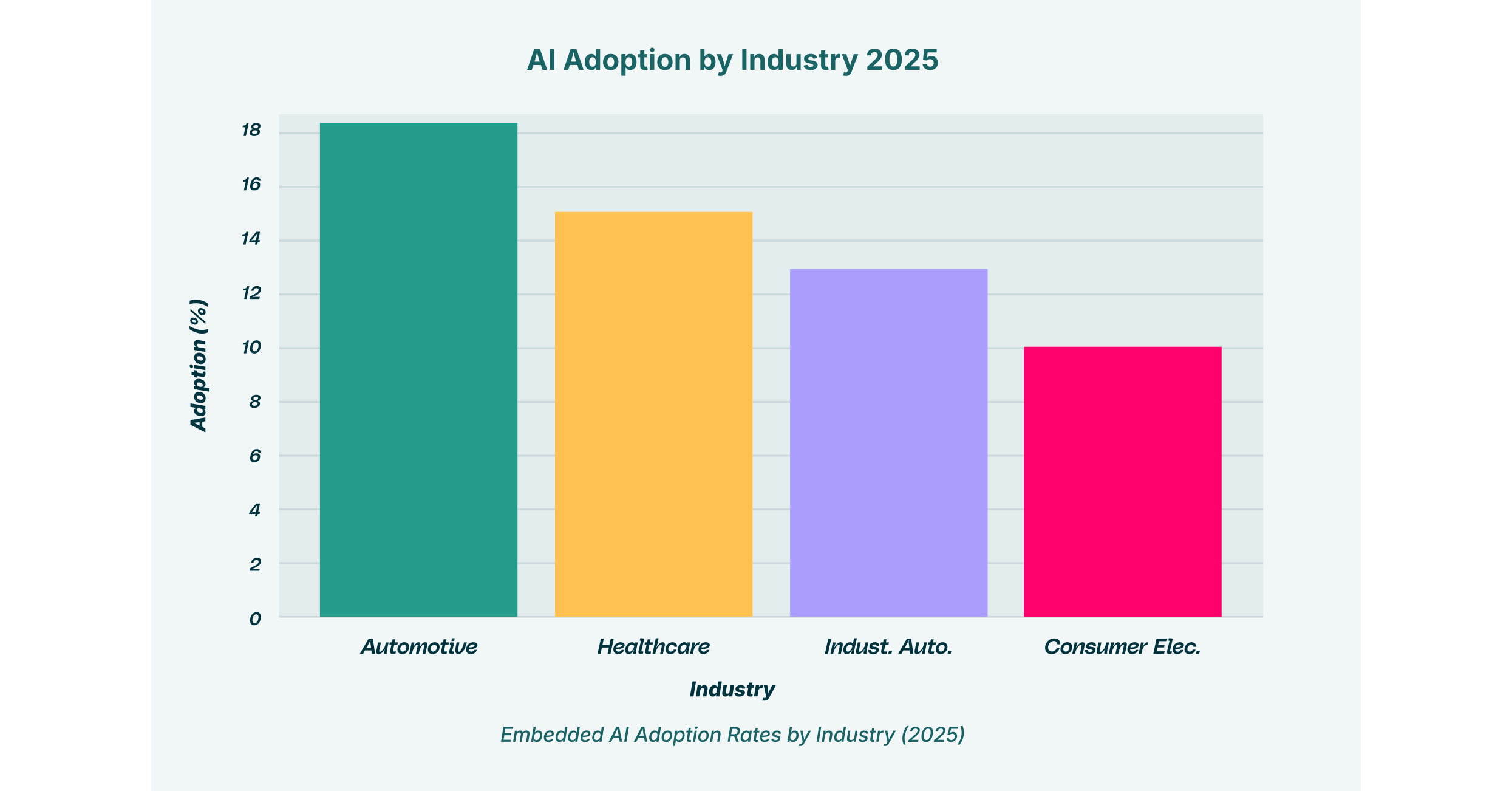Embedded AI (EAI) represents a significant evolution in how organizations can utilize artificial intelligence. Unlike traditional AI models that rely on cloud-based servers, embedded AI integrates intelligence directly into devices and applications at the edge. This allows for data processing and decision-making to occur locally, without the need for constant internet connectivity. This shift brings AI capabilities, such as neural networks and machine learning models, into the very fabric of enterprise systems, from industrial controllers to everyday business software. As a result, embedded systems are becoming more intelligent, autonomous, and efficient.
The core idea behind embedded AI is to bring intelligence closer to the data source. This approach avoids the latency and potential security risks associated with sending large volumes of data to a centralized cloud for processing. For enterprises, this means faster insights, more responsive automation, and a greater degree of control over sensitive information. This move towards on-device intelligence is not just a technical upgrade; it is a strategic shift that is redefining performance and efficiency across industries.
How Embedded AI Works
At a technical level, embedded AI relies on a combination of specialized hardware and highly optimized software. These systems are designed to operate within the constraints of devices that may have limited power, memory, and processing capabilities. The architecture of an embedded AI system typically consists of three main components: a data module, an algorithm module, and an inference module.
The process begins with smart sensors that collect data from the surrounding environment. This could be anything from temperature readings in a manufacturing plant to voice commands in a smart office device. This raw data is then pre-processed directly on the device to filter out noise and prepare it for analysis. This is a critical step in ensuring the efficiency of the AI integration.
Once the data is prepared, it is fed into a locally stored, trained AI model for real-time inference. These models are often a specialized form of machine learning known as TinyML, which is specifically designed to run on low-power devices. The model analyzes the data and generates an output, such as a prediction or a classification. A decision-making algorithm then interprets this output and triggers an appropriate action, all within milliseconds. This entire workflow happens on the device, enabling immediate and autonomous responses.
Embedded AI vs. Standalone AI
The distinction between embedded AI and standalone AI systems is fundamental. Standalone AI solutions typically operate outside of an organization’s core enterprise landscape, requiring data to be exported and processed in a separate environment. This can lead to fragmented data, integration challenges, and inconsistent governance. In contrast, embedded AI is an integral part of the application or platform itself.
| Feature | Embedded AI | Standalone AI |
| Data Processing | Occurs locally on the device or within the application . | Requires data to be sent to an external cloud or server for processing . |
| Integration | Built directly into enterprise applications and workflows . | Sits outside of core systems, requiring complex integrations . |
| Latency | Minimal, enabling real-time decision-making . | Higher due to data transmission to and from the cloud . |
| Connectivity | Can operate offline, without constant internet access . | Dependent on a stable internet connection for functionality. |
| Security & Governance | Inherits the security and compliance rules of the host system . | Requires separate governance and security protocols, increasing risk . |
| Cost | Reduces costs associated with data transmission and cloud processing . | Can incur significant costs for data storage and cloud computing resources. |
This inherent difference in architecture makes AI in embedded systems a more seamless and secure option for many enterprise use cases.
Core Benefits of Embedded AI for Businesses
The adoption of embedded AI offers a range of compelling benefits for modern enterprises. By moving intelligence to the edge, organizations can significantly improve operational efficiency, reduce costs, and strengthen their security posture.
One of the most significant advantages is the reduction in latency. Because data is processed locally, embedded AI systems can make decisions in real time, which is critical for applications like industrial automation and autonomous vehicles. This also minimizes network bandwidth usage and associated costs, as only relevant insights need to be transmitted, rather than raw data.
From a security perspective, embedded AI provides a more secure and governed environment. Since data is processed on the device, it is less exposed to the risks of interception or unauthorized access that can occur when transmitting data to the cloud. Furthermore, because embedded AI operates within the existing enterprise platform, it automatically inherits the organization’s security, compliance, and governance frameworks, simplifying oversight and reducing risk. This is particularly important in the context of “shadow AI,” where employees may use unsanctioned AI tools that operate outside of the company’s security controls.
Real-World Embedded AI Examples
The practical applications of embedded AI are vast and continue to expand across numerous industries. These embedded AI examples illustrate the transformative impact of on-device intelligence.
- Industrial Automation: In manufacturing, embedded AI is used for predictive maintenance, where sensors on machinery can detect early signs of failure and alert technicians before a breakdown occurs. It is also used for quality control, with AI-powered cameras identifying defects on production lines in real time.
- Smart Vehicles: Modern vehicles use embedded AI for Advanced Driver-Assistance Systems (ADAS), enabling features like lane assist, collision detection, and adaptive cruise control.
- Healthcare: Wearable health monitors utilize embedded AI to track vital signs, detect falls, and provide users with real-time feedback on their health and activity levels.
- Retail: Embedded AI is being deployed in smart vending machines for inventory tracking and in point-of-sale systems for fraud detection.
- Smart Homes and Offices: Many smart devices, from security cameras with face detection to voice-controlled assistants, are powered by embedded AI.
Implementing Embedded AI Effectively
For organizations looking to adopt embedded AI, a strategic approach is essential. The first step is to identify the right use cases where real-time processing and on-device intelligence will deliver the most value. This could be in areas where latency is a critical factor or where data privacy and security are paramount.
Choosing the right hardware and software is another crucial consideration. The market for specialized processors and chips designed for embedded AI, such as Neural Processing Units (NPUs), is growing rapidly. These need to be matched with optimized software and AI models, like those developed using TinyML, to ensure efficient performance within the constraints of the embedded device.
However, the implementation of AI in embedded systems is not without its challenges. It requires a specialized skillset that goes beyond traditional embedded systems development to include expertise in AI algorithms and sensor data processing. Organizations must be prepared to invest in the right talent and tools to succeed.
The Future of Embedded AI and Enterprise Security
The trajectory of embedded AI is closely linked to the growth of the Internet of Things (IoT) and edge computing. As more devices become connected, the demand for on-device intelligence will only increase. This will lead to even more sophisticated embedded AI examples and a deeper AI integration into both our personal and professional lives.
However, this proliferation of intelligent devices also introduces new security challenges. The very browser that employees use to access powerful AI tools can become a vector for data exfiltration. Malicious browser extensions can silently access and modify the content of GenAI chats, leading to “Man-in-the-Prompt” attacks that can result in the leakage of sensitive data. As AI becomes more embedded in enterprise workflows, the risk of “shadow AI” usage also grows, creating a significant blind spot for security teams.
This is where solutions like LayerX’s Enterprise Browser Extension become critical. By providing visibility and control over all browser activity, LayerX helps organizations manage the risks associated with both sanctioned and unsanctioned AI usage. It can uncover every AI-embedded application and browser-based agent in use, allowing security teams to enforce policies that protect sensitive information without stifling innovation. This is essential for enabling the safe and scalable adoption of AI across the enterprise.[15]
Strategic Path Moving Forward
Embedded AI is fundamentally changing the way businesses operate, offering a powerful combination of real-time insights, enhanced efficiency, and improved security. By moving intelligence to the edge, EAI enables a new class of applications that are more responsive, autonomous, and secure. From the factory floor to the corporate office, the impact of AI in embedded systems is already being felt.
However, to fully realize the potential of embedded AI, organizations must also be prepared to address the associated security risks. As AI integration becomes deeper, the need for robust security solutions that can govern AI usage in the browser becomes paramount. With the right strategy and tools, businesses can confidently embrace the future of AI, turning a potential risk into a powerful competitive advantage.



